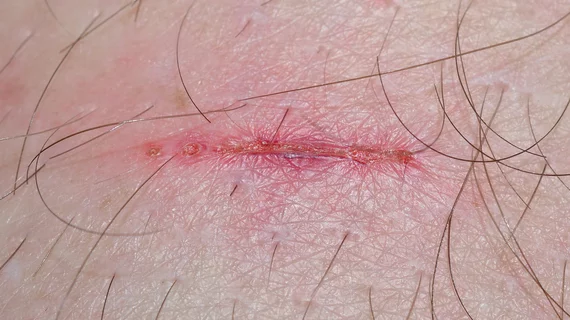Printed ‘skin’ hastens healing, lessens scarring
Researchers have demonstrated the 3D bioprinting of artificial human skin so lifelike it can quickly fuse with damaged tissue from the surface (epidermis) through the midlevel (dermis) and into the underlying fatty layer (hypodermis).
The technology holds promise to speed wound healing and reduce scarring, the team suggests in a study published online Nov. 30 in APL Bioengineering.
Chemical engineer Richard Moakes of the University of Birmingham in the U.K. and colleagues describe their work using suspended layer additive manufacturing—aka “SLAM”—to construct their three-layered implant.
They formulated the bioink with chemical and cellular properties that perfused all three layers.
Testing the implant formula over time, Moakes and co-authors found it mimicked healing skin over at least three weeks.
More impressive, they suggest, was the test substance’s integration with real skin at just seven days post-implantation, “with mobilization of the adipose tissue from the surrounding tissue into the construct itself.”
For this reason, the authors state, they believe the implants “can facilitate healing, commencing from the fascia, up toward the skin surface—a mechanism recently shown to be key within deep wounds.”
Journal publisher AIP Publishing, a not-for-profit subsidiary of the American Institute of Physics, reports that the team “cannot assess chronic wound healing with the skin substitute because that process takes more time than their model allowed, which was only 14-21 days.”
More:
[T]heir their next step is to test longer, appropriate models for chronic deep wounds. The ultimate goal is to repair human skin and reduce scarring for all patient scenarios.”

